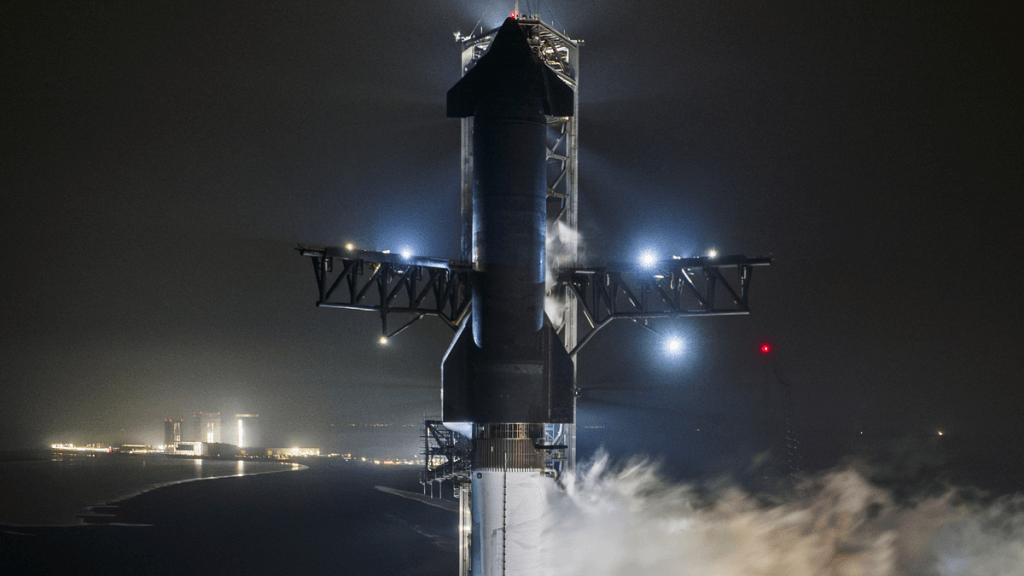SpaceX is set to perform the third orbital test of its Starship rocket on Thursday (March 14), and you can watch the event for free online.
Standing over 400 feet (122 meters) tall, this huge rocket consists of two parts. The first is a stainless steel, reusable upper stage that’s known also as “Starship,” and the second is a Super Heavy first-stage booster. Starship is currently the largest and most powerful rocket ever built. Its ultimate aim is to help astronauts journey to the moon, and eventually Mars, as they embark on more sustained space missions and perhaps start creating settlements on the alien worlds.
SpaceX announced the launch on its X feed, saying its stream of Starship’s third flight would begin on Thursday at 7:30 a.m EDT (1130 GMT). The company also said the stream would begin 30 minutes before launch, which suggests a tentative liftoff time of around 8 a.m EDT (1200 GMT). A livestream of the rocket’s test will also be available to watch on Space.com’s YouTube channel just here.
Related: SpaceX eyes March 14 for 3rd Starship test flight
“The third flight test aims to build on what we’ve learned from previous flights while attempting a number of ambitious objectives, including the successful ascent burn of both stages, opening and closing Starship’s payload door, a propellant transfer demonstration during the upper stage’s coast phase, the first ever re-light of a Raptor engine while in space, and a controlled reentry of Starship,” SpaceX wrote on its Starship mission website. “It will also fly a new trajectory, with Starship targeted to splashdown in the Indian Ocean. This new flight path enables us to attempt new techniques like in-space engine burns while maximizing public safety.”
These objectives make this third flight of Starship more ambitious than the rocket’s previous two flights.
Starship flew its first mission from SpaceX’s Starbase site in South Texas in April 2023. This launch ended after the rocket’s two stages failed to separate, and it intentionally detonated just four minutes after blast-off.
The second flight of Starship in Nov. 2023 was marginally more successful, with the space vehicle achieving a nominal first-stage engine burn and its two stages separating on schedule. Around eight minutes after launch, however, the rocket exploded during a venting of liquid oxygen. SpaceX founder and CEO Elon Musk said that this explosion wouldn’t have happened if Starship had been carrying a payload on the second flight because, in that scenario, it wouldn’t have been hauling liquid oxygen.
Prior to the third test flight of Starship, SpaceX performed a critical fueling test at its Starbase facility near Boca Chica, Texas. During the test, over 10 million pounds of liquid methane and liquid oxygen were poured into the rocket.
“Starship Flight 3 is preparing for launch,” SpaceX CEO Elon Musk wrote in a post on X, along with accompanying photos of the fueling test.

